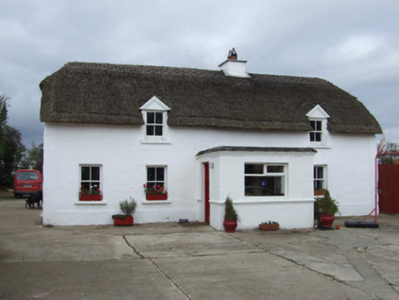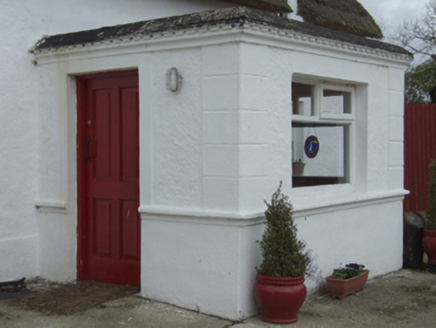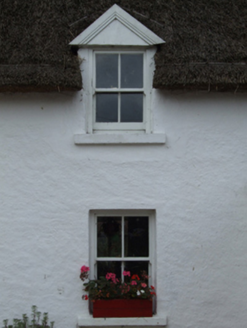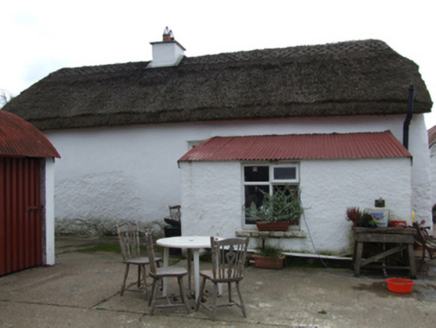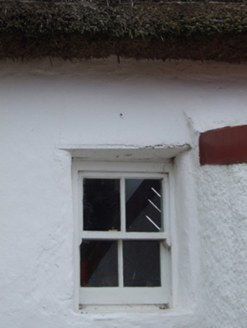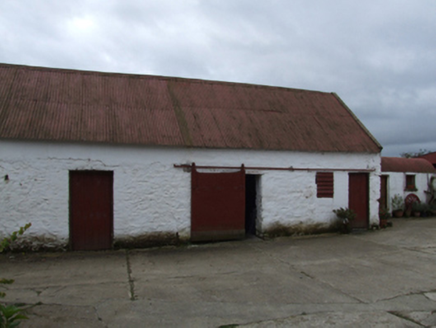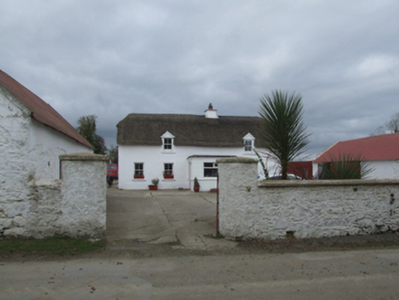Survey Data
Reg No
15704125
Rating
Regional
Categories of Special Interest
Architectural, Social
Original Use
Farm house
In Use As
Farm house
Date
1700 - 1840
Coordinates
289009, 117442
Date Recorded
11/07/2007
Date Updated
--/--/--
Description
Detached three-bay single-storey lobby entry thatched farmhouse with half-dormer attic, extant 1840, on a rectangular plan centred on single-bay single-storey flat-roofed projecting porch. Occupied, 1990. In ruins, 2002. "Restored", 2006. For sale, 2009. Replacement hipped or hipped gabled oat thatch roof overhanging gablets to window openings to half-dormer attic with exposed hazel lattice stretchers to ridge having exposed scallops, cement rendered off-central dwarf chimney stack having shallow capping supporting terracotta pots, and exposed hazel stretchers to eaves having exposed scallops. Limewashed rendered battered walls on rendered "bas-relief" plinth with rusticated rendered "bas-relief" piers to corners. Square-headed central door opening into farmhouse. Square-headed window openings with concrete or rendered sills, and concealed dressings framing replacement two-over-two timber sash windows having part exposed sash boxes. Set back from line of road in courtyard with limewashed cylindrical piers to perimeter having shallow conical capping supporting flat iron "farm gate".
Appraisal
A farmhouse identified as an integral component of the vernacular heritage of County Wexford by such attributes as the compact rectilinear lobby entry plan form centred on an expressed, albeit later porch; the construction in unrefined local materials displaying a battered silhouette with a patchy surface finish revealing evidence of "daub" or mud; the somewhat disproportionate bias of solid to void in the massing; and the high pitched roof showing an oat thatch finish. Having been successfully "restored" following a prolonged period of unoccupancy in the later twentieth century, the elementary form and massing survive intact together with quantities of the original or sympathetically replicated fabric, thus upholding the character or integrity of the composition. Furthermore, adjacent "tin roofed" outbuildings (extant 1903) continue to contribute positively to the group and setting values of a neat self-contained ensemble making a pleasing visual statement in a rural street scene.

